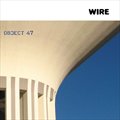风 格:后朋克
成立时间:1976年
解散时间:1991年
国 籍:英国
大家都评价他们是最具艺术感觉的朋克乐队,震撼低沉的作品简洁精,摒除了多余的音符,1977年,乐队的处女作,一张革命性的唱片《Pink Flag》就证明了这点——在40分钟长度内展现了21首歌曲。
乐队到1979年的时候已经又连续出版了两张受到好评的唱片。可是正当乐队的声誉蒸蒸日上的时候。1979年底,Wire突然宣布解散,他们认为灵感已被耗尽。乐队成员分别开始了个人的事业。1986年,乐队重组,并相继出版了几张实验性的流行唱片,这时乐队的拥护者已经开始减少。1991年,乐队不得不再次解散。
乐队的成员包括主唱兼吉他手Colin Newman、吉他手Bruce Gilbert、贝司手Graham Lewis,以及鼓手Robert Gotobed(乐队解散前几个月离队)。因为他们都对刚出现的朋克音乐的共同兴趣,所以组建了Wire。可当时,这几个年轻人却玩不转自己手中的家伙。这可能也是为什么他们的音乐自然朴素兼实验性的原因罢!
1995年,Elastica乐队将Wire的作品“Three Girl Rhumba”进行了再创作,另外一支乐队Menswear也将Wire作品中的经典riff加到了自己的泡泡糖舞曲中。
by Wilson Neate
Wire emerged out of the British punk explosion but, from the outset, maintained a distance from that scene and resisted easy categorization. While punk rapidly became a caricature of itself, Wires musical identity — focused on experimentation and process — was constantly metamorphosing. Their first three albums alone attest to a startling evolution as the band repeatedly reinvented itself between 1977 and 1979. That capacity for self-reinvention, coupled with a willingness to stop recording indefinitely when ideas werent forthcoming, has been crucial to Wires longevity and continued relevance.
By the time of punk, British art schools had long been a hotbed of musical activity, spawning some of the nations most innovative rock acts from the 60s onward. Like many punk contemporaries, Wire had roots in the art school tradition. At Watford Art College in 1976, guitarists Colin Newman and George Gill formed Overload with audiovisual technician Bruce Gilbert (also on guitar). Subsequently, the three recruited bassist Graham Lewis and drummer Robert Gotobed (aka Robert Grey), and the first Wire lineup was in place.
Wire began playing dates in London and, having ousted Gill, started from scratch, writing new material and taking a more pared-down, experimental approach. A gig at the Roxy in early 1977 proved auspicious. Wire met EMIs Mike Thorne, who was recording groups for a live punk album, The Roxy, London WC2. Thorne included two Wire tracks and was then instrumental in bringing the band to EMI in September. By then, with Newman writing most of the music, they were eager to record before they lost interest in material, abandoned it, and moved on; a pattern that would define the group.
Produced by Thorne, 1977s amphetamine-paced Pink Flag found Wire taking punk to extremes while also keeping an ironic distance from it by introducing elements of tension and abstraction. Pink Flags 21 highly original tracks (each averaging just over a minute and a half) compressed and twisted rock into often jagged, taut shapes. The album met with critical acclaim and a follow-up was recorded in spring 1978.
Chairs Missing was a radical departure. Although the phrase early Pink Floyd was uttered dismissively in some quarters, it was well-received. With Thorne playing keyboards and producing, this was a more complex, multi-dimensional record that supplemented Pink Flags harsh minimalism with dense, occasionally unsettling atmospherics. Wire albums usually feature one near-perfect pop song and Chairs Missings Outdoor Miner almost became a hit, until it was scuppered by a payola scandal at EMI.
This was an enormously creative phase. Songs were being written and jettisoned at a considerable rate and the band was gigging relentlessly. In summer 1978, Wire played in the U.S. for the first time and, in March 1979, toured Europe with Roxy Music. Although Chairs Missing had been released only months before, live sets included a significant amount of material that would appear on 154. Indeed, Wire often tended to bewilder live audiences by playing new, unrecorded tracks rather than the numbers people expected to hear.
If Chairs Missing saw Wire exploring the possibilities offered by the recording studio, on 154 they took fuller advantage of that environment. With Lewis emerging as a vocalist alongside Newman, the result was an expansive, textured album with a more pronounced melodic orientation. 154 was Wires most accomplished statement to date and the group seemed poised for success. The opposite happened. Wires relationship with EMI unraveled and they were soon label-less. In February 1980 at Londons Electric Ballroom, the band played an infamously chaotic show (captured on Document and Eyewitness) that was more like performance art than a rock performance. A five-year hiatus ensued.
Following a period of intense activity away from Wire, the members regrouped in 1985, referring to their new incarnation as a beat combo — a no-nonsense, stripped-down unit. The 1986 comeback EP, Snakedrill, begat Drill, a track built on a paradigmatic Wire rhythm, which bridged the gap between the groups past and its present. Drill would stand as an evolving metaphor for the bands shifting identity. It mutated through multiple versions, changing from performance to performance. (In 1991, Wire would release The Drill, an album composed entirely of versions of the track.)
The bandmembers solo endeavors during the early 80s proved crucial to Wires new direction: the avant-pop sensibility developed by Newman on his albums and the experimental inclinations of Lewis and Gilbert were channeled into the nascent digital context in which the band was now working. The Ideal Copy (1987), the first full-length example of Wires new approach to the processes of composition and recording with sequencing technology, found the groups smart, state-of-the-art grooves skirting the dancefloor. While first-generation fans were glad to have Wire back, their new sound drew a new audience in the U.S. and an American tour followed. They continued in an electronically oriented direction with the more homogeneous A Bell Is a Cup...Until It Is Struck(1988), whose combination of hypnotic, melodic patterns and impenetrable yet catchy lyrics made for surreal, brainy pop.
Wire had already made one of rocks more unorthodox live records but they further deconstructed the cliché of the live album for 1989s Its Beginning to & Back Again. Performance recordings were stripped down in the studio, sometimes to a drumbeat or a baseline, which was then used as the starting point for rebuilding the track. Wire continued to experiment with ways of letting studio technologies affect their creative process on Manscape (1990), which forayed deeper into computer-based electronics and programming. Drummer Robert Gotobed was less enthusiastic about changing his role in the developing digital version of Wire and left the band just before a 1990 tour. Dropping the e from the groups name, Gilbert, Lewis, and Newman carried on as Wir, releasing The First Letter. In 1991, another hiatus began and the three returned to their diverse solo ventures.
In the 80s, American bands like R.E.M. and Big Black had covered Wire songs. By the mid-90s, Wires influence started to manifest itself among a younger generation of Britpop artists, most notoriously Elastica, whose appropriation of Pink Flags Three Girl Rhumba resulted in a settlement between the groups respective music publishing companies. Having briefly resurfaced with Robert Gotobed in 1996 for a performance of Drill to celebrate Bruce Gilberts 50th birthday, Wire remained silent until 1999, when they began rehearsing again. In 2000, the band played live in the U.K. (including an event at Londons Royal Festival Hall) and completed a U.S. tour; unpredictable as ever, Wire performed almost exclusively old numbers.
Although reworkings of older tracks taped during 1999 rehearsals appeared on The Third Day (2000), Wire soon initiated their next phase. Completely new material appeared in the form of 2002s Read & Burn 01, the first in a projected series of releases to be developed at Newmans Swim studios. While the fast, loud menace of Read & Burn 01 harked back to Pink Flag, Wire sounded more like they were stomping all over their roots than nostalgically returning to them. A second Read & Burn was out by the end of the year; Send, a full-length containing brand new songs and Read & Burn material, was released in May of 2003.





